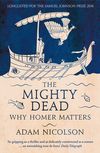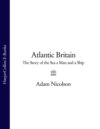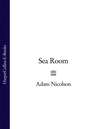Читать книгу: «Men of Honour: Trafalgar and the Making of the English Hero», страница 2
Part I Morning
October 21st 1805 5.50 am to 12.30 pm
1 Zeal
October 21st 18055.50 am to 8.30 am
Distance between fleets: 10 miles-6.5 miles
Victory’s heading and speed: 067°-078° at 3 knots
Zeal: passionate ardour for any cause
SAMUEL JOHNSON, A Dictionary of the English Language, 1755
At 5.50 on the morning of 21 October 1805, just as dawn was coming up, the look-outs high on the mainmasts of the British fleet spied the enemy, about twelve miles away downwind. They had been tracking them for a day and a night, the body of their force kept carefully over the horizon, not only to prevent the French and Spanish taking fright and running from battle, but to remain upwind, ‘keeping the weather gage’, holding the trump card with which they would control and direct the battle to come. All night long, British frigates, stationed between the two fleets, had been burning pairs of blue lights, every hour on the hour, as pre-arranged. It was the agreed signal that the enemy was standing to the south, just as was wanted, straight into the jaws of the British guns.
Twenty minutes after the first sighting in the light of dawn, Nelson signalled to the fleet: ‘Form order of sailing in two columns.’ This was the attack formation in which he had instructed his captains over the preceding weeks. His next signal, at 06.22, confirmed what they all knew was inevitable: ‘Prepare for battle’. Twenty minutes after that, the French frigate Hermione, standing out to the west of her own battle fleet, peering into the dark of the retreating night, signalled to her flagship, the Bucentaure: ‘The enemy in sight to windward.’ For all 47,000 men afloat that morning, it felt like a day of destiny and decision. Most ships in both fleets were already cleared for action.
The French and Spanish were about twelve miles and the British about twenty-two miles off the coast of southwest Spain. The nearest point was Cape Trafalgar, an Arabic name, meaning the Point of the Cave, Taraf-al-Ghar. From the very top, the truck, of the highest masts in the British fleet, two hundred feet above the sea, you could just make out the blue smoky hills standing inland towards Seville. The wind was a light northwesterly, perhaps no more than Force 2 or 3, blowing at about 10 knots, but that was enough. A man-of-war would sail with a breeze so slight it could just be felt on the windward side of a licked finger. On the day of the battle, only the very largest ship, the vast Spanish four-decker, the Santísima Trinidad, did not respond to her helm. Most had just enough steerage way to manoeuvre. The sky was a pale, Neapolitan blue, with a few high clouds, and it was warm for the autumn. By midday, the Spanish meteorologists, recording the temperature in the Royal Observatory just outside Cadiz, would log 21° Celsius, about 70° Fahrenheit. In all ships in both fleets, men would strip to the waist. There was only one ominous element to the weather: a long, stirring swell was pushing in from the southwest, ‘the dog before its master’, the sign of a big Atlantic storm to come.
Twenty-six British ships-of-the-line were bearing down from to-windward. One more, the Africa, captained by Henry Digby, the richest man in the English fleet, who had won for himself £60,000 of prize money by the time he was thirty, perhaps £3-4 million in modern terms, had missed Nelson’s signal in the night, had got out of position and was now coming down from the north. The main body of the fleet was arranged a little raggedly, in two rough columns, ‘scrambling into action’ as one of the British captains described it afterwards, ‘in coveys’ as a Spaniard remembered it, as though the British fleet were a flock of partridges drifting in from the western horizon.
Nelson was already on the quarterdeck of Victory, a slight, grey-haired 47-year-old man, alert, wiry, anxious and intense, five feet four inches tall and irresistibly captivating in manner. Before battle, the remains of the arm he had lost in a catastrophic fight against the Spanish in the Canaries eight years before tended to quiver with the tension. ‘My fin’ he called it, and on his chairs he had a small patch particularly upholstered on the right arm, where he could rest this anxious stump. Like most naval officers, he was both tanned—the word used by unfriendly landlubbers to describe captains and admirals in Jane Austen’s Persuasion is ‘orange’—and prematurely aged, worn out by the worry and fretfulness of his life. At regular intervals, he would be struck, quite unexpectedly, by a terrifying and debilitating nervous spasm, his body releasing, in a surge of uncontrolled energy, the anxiety it had accumulated day by day. Only three weeks before Trafalgar, one such attack, suddenly coming on at four in the morning, had left him feeling enervated and confused. ‘I was hardly ever better than yesterday,’ he wrote to his lover Emma Hamilton,
and I slept uncommonly well; but was awoke with this disorder. The good people of England will not believe that rest of body and mind is necessary for me! But perhaps this spasm may not come again these six months. I had been writing seven hours yesterday; perhaps that had some hand in bringing it upon me.
The burden of work was unremitting. Drawings of the cabins of naval commanders of this period show pile on pile of papers, logbooks, files, notebooks, charts, musterbooks, and orderbooks. It was a navy that ran on paper.
No one who met Nelson thought he looked like a hero should. Lady Spencer, sophisticated wife of a distinguished First Lord of the Admiralty called Nelson ‘a most uncouth creature.’ His general appearance, she thought—and this was a woman who loved and admired him—‘was that of an idiot.’ He was the most feared naval commander in the world. In the previous seven years he had entirely destroyed, in brutally close action, both a French and a Danish fleet, with scarcely a thought for his own or his crews’ safety. ‘I consider the destruction of the Enemy’s Fleet of so much consequence,’ he had written within the last few months, ‘that I would willingly have half of mine burnt to effect their destruction. I am in a fever. God send I may find them.’ Naval warfare had not known such application since the wild mêlées of almost two centuries before. Nelson’s declared purpose, in letter after letter, was simple and total: ‘annihilation’. The spirit of Achilles was in him.
He was dressed this morning, as ever, in the coat on which the four stars of his orders of knighthood were embroidered in sequins. There was a drama to his presence. This was not Horatio Nelson, the smallish son of a Norfolk parson, the desperately anxious, self-justifying, sometimes jealous, sometimes squabblingly argumentative man he could so often appear from his letters; nor the extraordinarily unbuttoned lover; nor the friend of his brother officers and subordinates to whom, in an endless and ubiquitous cascade of ease and intimacy, he could bind himself with a single letter or even a look. This, as his orders still preserved in the Admiralty files in London repeatedly describe him, was:
The Right Honorable Lord Viscount Nelson k.b. Duke of Bronte in Sicily, Knight of the Great Cross of St Ferdinand & of Merit, Knight of the Order of the Crescent & of the Illustrious Orders of St Joachim, Vice-Admiral of the White and Commander in Chief of His Majesty’s Ships and Vessels employed and to be employed on the Mediterranean Station.
Here was the Trafalgar amalgam, Achilles as the servant of the state, an intense and passionate man, in whom one of the forms which passion took was the precise and unending attention to the details of order and organisation on which successful war depended.
The slowness of it would surprise us today, a murderous punch delivered at just about walking pace. The British ships, with all sails set, were moving at no more than two or three miles an hour. Ships’ boats rowed the frigate captains over to the flagship. In most ships, breakfast and then lunch were served to the men. According to Nelson’s particular instructions, all the men were given wine not the mixture of rum and water known in the navy as grog. As each swell came through, picking up the starboard quarter, travelling the length of the hull and then dropping the bow in the trough that followed, the huge rectangular bodies of the ships-of-the-line, built more for strength than speed, wooden blockhouses with oak walls three feet thick, their length no more than three or four times their beam, surged forward for a moment, only to fall back into a low, lazy wallow. Swell in light airs slats and bangs at sails and yards. From the slow scraping to and fro of an unoiled block, the creak of the main-top irons, the ‘frequent crack, crack of the tiller’ as the helmsman adjusted to each swell, the snatch and tug of a gust at the canvas, the pulling of the hard-eyes at the shackles on deck, everyone on every ship would have known that a storm would be on them before a day or two was out.
For over six steady hours, the two fleets watched each other growing larger, filling ever more of the eyepieces of their telescopes. A few miles out from the Spanish coast, and keeping warily away from the line of reefs and shoals which rim that shore between Cadiz and Cape Trafalgar, the combined Spanish and French fleet of 33 ships-of-the-line had been, according to orders received from Napoleon himself, attempting to make their way down into the Strait of Gibraltar and then on into the Mediterranean, heading for southern Italy where they were to land the 4,000 French soldiers they had on board. This force was to secure Naples and guard the Emperor’s southern flank as he invaded central Europe.
The Combined Fleet was not in good order. They had inched out of Cadiz over the previous 36 hours, intently watched by Nelson’s guard-dogs, every move, every hoisting of a yard, every bending of a sail transmitted by flag signal to the admiral waiting over the horizon. But the wind conditions had been difficult, their manoeuvres had been poorly executed and by this morning several ships had slipped far to leeward of the line. Mutual contempt prevailed between French and Spanish officers. The French considered the Spanish incompetent, the Spanish thought the French treacherous. Much of this fleet had fought an action together against a British squadron in July, in which two Spanish ships had been captured by the British, the result, the Spanish thought, of French failure to defend them. The French of course saw it only as evidence of Spanish hopelessness at sea. An atmosphere of anxiety and gloom had settled on them all. As the Spaniards had left the final angry Council of War in Cadiz, two days earlier, they had bowed to Villeneuve, the French Commander-in-Chief ‘with a resigned demeanour, like gladiators of old Rome, making their salute in the arena: “Ave Caesar, morituri te salutant!” Hail Caesar, those who are about to die salute you.’
The asymmetry between British confidence and Franco—Spanish despair, at the very beginning of the battle, is the governing condition of Trafalgar. The battle was lost and won before a moment of it was fought. This was a meeting the British had desired for at least two years, a chance to establish their command of the world ocean. But it was a meeting which their enemies, as they quite explicitly repeated in dispatch after dispatch to Madrid, Paris and on to Napoleon’s mobile headquarters, then in Germany, did not desire at all. The French and Spanish commanders knew, as if it were their destiny, that a catastrophe awaited them.
In the light of this, what happened at Trafalgar is, on one level, not complicated: a highly ambitious, confident and aggressive English battle fleet found and attacked a larger combined French and Spanish fleet whose morale was broken, and whose command was divided and without conviction, and heavily defeated it, by killing and disabling very large numbers of its officers and crew. In some ways, that was all: a pack of dogs battened on to a flock of sheep.
It is an easy description and in some ways inaccurate. The sheep were armed, brave, obstinate and frightening and did dreadful damage to the British attackers. Nevertheless there is a kernel of truth in it and the description raises questions. Why were the English so ambitious, so confident and so aggressive? Why were these crews, about half of them there against their own will, prepared to accept the level of risk which their commanders offered them? Why, in their different ways, were the French and Spanish so broken, so pusillanimous, so defeatist? Why did the British manage to kill ten times more of their enemy than they did of the British? How by 1805 had the Royal Navy become the most effective maritime killing machine in the world? And how had the French and Spanish, each with their long, dignified and noble naval traditions, become their quivering and broken victims?
There are technological answers to these questions, to do with ships and guns, but they are not enough. Two British ships, the Berwick and the Swiftsure, both in fact fought on the French side during the battle. They had been captured from the British during the war. The British Belleisle had begun life as the French Formidable, captured off the Breton coast in 1795. Many of the British ships had anyway been built as copies of French men-of-war. The British Achille for example was a precise copy of the French 74-gun ship Pompée, which had been captured by the British in 1793. The Spanish fleet had in large part been built by renegade Catholic Irishmen, using British ship-building techniques, even in the Spanish yards in Cuba, and including the greatest ship of all, the four-decker Santísima Trinidad, entirely constructed of sweet-smelling Cuban cedar.
Technology does not distinguish the fleets—or at least not sufficiently. What makes them different are the people on board. Trafalgar is a meeting of men. It is in the men that the difference lies between aggression and the need to defend; between the desire to attack and destroy and the desperate fear for one’s life; between the ability to persist in battle when surrounded by gore, grief and destruction and the need to submit to the natural instincts to surrender; and between a reliance on an old-fashioned tactical method of defence—the well-closed-up line—and a hungry, searching and disconcerting inventiveness which blew that defence into atoms. The day of Trafalgar was one in which three complex variations of the early 19th-century European frame of mind was put to the test.
Both French and Spanish regarded the British with fear and contempt. When the Spanish declared war on Great Britain in 1797, the Madrid government had explained its decision to go to war by describing how
that ambitious and greedy nation has once more proclaimed to the world that she recognizes no law but that of aggrandizement of her own trade, achieved by her global despotism on the high seas; our patience is spent, our forbearance is exhausted: we must now turn our gaze to the dignity of our throne…We must now declare war on the King of England and the English nation.
The values that were in conflict here are obvious enough, and reminiscent of 20th-century European attitudes to America: British amoral commercial ruthlessness set against the dignified, aristocratic patience and honour of old Spain. It is the repeated note in the contemporary Spanish view of Britain, confirmed after an incident in October 1804, when Spain was reluctantly in alliance with France but not yet formally at war with Britain, and which established the British fleet in Spanish eyes as little more than statesponsored pirates.
A powerful group of four British frigates under the command of Captain Graham Moore, as commodore of the squadron, was cruising off Cadiz, with orders to detain any Spanish ships they should fall in with. Early on the morning of 5 October, they spotted four large Spanish frigates coming in from the west and making for Cadiz harbour. After an initial parley, in which the Spanish refused to surrender, the British rapidly savaged their opponents. They had come from Montevideo, with four million South American gold dollars on board as well as hides and furs. Two of the Spanish frigates were captured, described as ‘torn to pieces’ when later brought into Spithead, and one of them, the Mercedes, blew up, killing everyone on board.
What scandalised Spanish opinion more than anything else, though, were the civilian casualties. The wife of a colonel of artillery was wounded in the battle and died of her wounds when a prisoner in England. On the Mercedes were a large number of ‘Spanish gentlemen and 19 ladies,’ as it was reported in the Naval Chronicle, ‘with their families, from Lima, returning to Old Spain, who, with the Spanish Captain, his wife, and seven children, all unfortunately perished in the explosion which took place.’ The presence of these people was known to the British commodore, but he had no hesitation, once the Spaniards had refused his invitation to accompany him to an English port, in making, as he described it in his dispatch, ‘the signal for close battle, which was instantly commenced with all the alacrity and vigour of English sailors.’ Moore was acting entirely in accord with British government policy. As Lord Harrowby, the British Foreign Secretary informed the Madrid Court, ‘it was an act done in express orders from his Majesty, to detain all ships laden with treasure for Spain.’ Spain was paying reluctant subsidies to France and so her bullion was seen by the British as war material. Heartlessness at sea, and never more than when in pursuit of gold, was British policy. Nelson himself was described by the deeply conservative and nationalistic Spanish poet Francisco Sánchez Barbaro as ‘el tirano del mar’ and ‘el héroe más bárbaro y tirano’. In the daily Diario de Madrid, the British in general were seen as ‘los arrogantes usurpadores de la libertad de los mares’. It seems, in retrospect, a perfectly legitimate description.
The language and perception was shared by the French. ‘The sea must become free like the land,’ the revolutionary zealot André Jeanbon Saint-André had told the French fleet in Brest in January 1794.
Deploy therefore all the force and power which the People, whom you have the honour to represent, can give to exterminate the most miserable of its enemies, the speculators of London, the oppressors of Bengal, the disturbers of public peace in Europe. Ships, cannon, sailors: such must be your rallying cry.
Far more than any war of the 18th century, this was a triangular, ideological conflict. A post-revolutionary, authoritarian regime in France, profoundly subversive of all the accepted nostrums of pre-modern European society, was allied in Spain with the most conservative and backward of all the European powers, the trailing partner in the alliance, against a Britain which already embodied a distinctly modern Atlanticist set of values—commercial, libertarian, amoral and aggressive—but which remained, nevertheless, dressed in some very old-fashioned ‘King and Country’, monarchist 18th-century Establishment clothes.
Spain was the poorest, weakest, most inefficient and most antique of the three. It remained in 1805 a profoundly conservative country. The radical changes that had already occurred further north in Europe scarcely impinged, except in the most superficial of ways, on the style, thinking and government of the country. Spain was without a middle class. Enormous armies of desperately poor landless peasants languished at the bottom of society. A hereditary aristocracy remained, at least in theory, the dominant class, motivated by little except a kind of piety towards the crown, its institutions and the Roman church. The Spanish navy was officered by those aristocrats and manned by those peasants—a plebeian/patrician polarity on which the working of modern, high technology men-of-war, with highly complex systems of both sailing and fighting the vessels, could not easily rely.
On top of that, the Spanish aristocracy had learned to exist in a kind of dependency culture. Spain itself, scarcely developed from its own medieval poverty, had relied for two and a half centuries on the wealth it had extracted from the New World. Six or eight generations of its leading families had come to understand that no effort was required in order to enjoy the fruits of life. They had become indolent. Work was anathema to them. The hereditary offices which they still held were performed for them by low-grade administrative clerks. Unlike in England, the aristocracy was still difficult to penetrate. Soldiers, bankers and lawyers had yet to enter its ranks. It had become, in a word, effete.
Spain had lagged behind. Professional people were still miserably paid and of low standing, treated as minor functionaries. The productive cycle which had been developing in Britain for a century or more between higher growth, better standards of living, rising expectations, a hunger for world markets and a burgeoning economy had scarcely begun in Spain. Disease still reigned: although plague had finally disappeared in the 1720s, ‘flu, smallpox, typhoid, dysentery and malaria continued to sweep through the country. Deeply symptomatic of a country going nowhere, of opportunities scarcely presenting themselves to Spanish youth, almost a quarter of Spaniards simply never married. There was no future for them to look forward to. As a result of high death rates and a low birth rate, the population of Spain had increased by little more than half during the century. In the same period, the number of English had doubled. The two countries were not even in the same arena. In the light of this, Nelson’s famous insult to the Spanish has often been misinterpreted as pure racism. ‘The Dons may make fine ships,’ he wrote in 1793, ‘—they cannot however make men.’ But this is not, as it might sound, a reflection on Spanish virility. It is a description of a demographic fact. The supply of good, strong, well-fed men, with a high level of ambition and enterprise, was simply absent. ‘They have four first-rates in commission at Cadiz,’ Nelson went on, ‘and very fine ships, but shockingly manned. I am certain if our six barges’ crews, who are picked men, had got on board one of them, they would have taken her.’ He was probably right.
Navies reflect the societies from which they come and at Cadiz in October 1805, Villeneuve, the French commander, was in despair about his Spanish allies. Their ships were in such poor condition, he reported to his friend Denis Decrès, Minister of Marine in Paris, that they should never have been sent to sea. Scurvy and dysentery were rife. One of the disadvantages from which Spain suffered, compared with its northern rivals, was the ability of tropical and Caribbean diseases to survive in the homeland. Yellow fever, which would habitually kill up to twenty per cent a year of the naval manpower of all nations when stationed in the Caribbean, could not survive the cold of southern England. In Spain it felt at home and Cadiz itself had been subject to a yellow fever epidemic that had been raging across the whole of southern Spain since the spring. More than a quarter of the thirty-six thousand people in Malaga, for example, had died of the sickness. With social systems collapsing across the whole of southern Spain, there was no food in Cadiz and few stores for refitting the ships. There was little money with which to pay crews, or any bounty for those who might be persuaded to volunteer. The people on board the Spanish ships, Villeneuve told Decrès, were ridiculous. Barely ten per cent were sailors. ‘It is truly painful to see such strong and beautiful ships manned with shepherds and beggars, and to have such a tiny number of real seamen. The fleet is not in a state to perform the services appointed to it. The Spanish are quite incapable of meeting the enemy.’ Intriguingly, the percentage of qualified seamen on British ships, when first leaving port, might not on occasions have been a great deal higher. The Spanish rarely put large fleets to sea but the British blue seas policy, pursued since the early 18th century, by which fleets were kept for years at a time blockading the ports of continental Europe, transformed those incompetent landmen into effective and coherent crews. On both sides, policy reinforced demography.
In common with other European navies, the Spanish had more ships than they could man. Unavailability of skilled labour, rather than the lack of funds, limited the effectiveness and power of their navy. Like the French, the government had for fifty years organised a register of all acknowledged seamen, on whom the state could call in time of war. But, inevitably, in Spain as in France, the state did not have the mechanisms to enforce the scheme. The demands made by the register could be all too easily cheated. Poorly paid officials depended on bribes as an essential part of their income, and repeatedly the men did not appear. The savage discipline habitual in all navies—fifty strokes while lashed to a cannon for the first attempt to desert; consignment to the galleys for the second—did little to encourage subscription.
Vice-Admiral Jose de Mazarredo wrote to the King in May 1801, describing his predicament when finding himself at sea with no more than sixty sailors with any experience out of a crew of five hundred, the rest being fishermen and off coasting vessels ‘without training or any understanding whatsoever of a ship’s rigging or routine on board, such as securing a topgallant sail to the yardarm or taking in a reef.’ It was a stumbling, untrained mass of ill-assorted peasantry with which the aristocrats of the Spanish officer class put to sea in October 1805. Spanish gun crews were able to fire one round every five minutes from each of their 32lb cannon. Most British crews could manage a round every ninety seconds. The best could reduce that time by a third.
The Spanish commander, Vice-Admiral Federico Carlos Gravina, was a Sicilian, and spoke a strongly accented Italian as his mother tongue—a trait he had in common with Napoleon—but his father, the Duke of San Miguel, was a Spanish grandee of the first class, as was his mother’s father. Gravina inherited the right on both his mother’s and his father’s side, to wear his hat in the presence of the King. He was, in many ways, an antique himself, laden with a sense of honour, duty and a particularly Spanish form of fatalism. ‘There are disasters that may be honoured as victory,’ the 19th-century Spanish nationalist Manuel Marliani later wrote of Trafalgar. It was a catastrophically self-fulfilling frame of mind.
Threads and fragments of the European Enlightenment had found their way into Spain. The Spanish navy had conducted long exploratory scientific voyages through the Pacific, which bear comparison with those of James Cook on behalf of the British Admiralty; and there was, for example, a modern and efficiently run meteorological observatory outside Cadiz. But these were superficial changes. The traditional structures remained in place. Of the two hundred and twenty-seven ships built for the Spanish Royal Navy in the eighteenth century, a third of them had been named after saints, others after the Mother of Christ, several after key elements of church doctrine: the Spanish Royal Navy was proud of nothing more than the Salvador del Mundo, and the Purísima Concepción. Here at Trafalgar, the Santísima Trinidad, the largest ship in the world, was the flagship of Rear-Admiral don Bernardo Hidalgo Cisneros, the Santa Ana carried the flag of Vice-Admiral don Ignacio Maria de Alava. In the Spanish fleet, Catholicism and aristocracy clasped each other in an embrace of pure retrospection.
The Spanish hierarchy had been exposed to, and clearly knew about, more modern approaches to war—and life—but didn’t take them up. After the execution of Louis XVI, Spain had been briefly allied with Britain against France. Gravina had visited Portsmouth in 1793 and had been introduced there to the extraordinarily beneficial effects that citrus juice could have on the health of sailors. The British sailors were known as ‘limeys’ for the very reason that they drank citrus juice drinks. Nelson would sip lemonade as he died. But Gravina ignored the advice. It was not what the Spaniards did. Lime and lemon juice was never introduced to the Spanish fleet and scurvy continued its wild career among their sad, impoverished crews.
There was one final element in Spanish naval tradition that would on the day secure their defeat. The navy itself, despite playing the essential role in the creation and maintenance of the Spanish overseas empire, on whose income the Spanish state itself relied, was not regarded, as it was in England, as ‘the first service’. The theatre in which true nobility in Spanish arms could be enacted was on land. Seamanship, the handling and running of a ship, was considered secondary to the fighting that could be done once the sailors had manoeuvred the warriors into position. The captain of a Spanish ship did not concern himself with sailing matters. That was the business of a junior officer, the pilot, to whom all aspects of seamanship were delegated. The captain was in charge of the soldiers on board, of whom there were inordinate numbers. As a result, the Spanish men-of-war at Trafalgar were not ships but floating fortresses, castles in transit, commanded by a clique of officers for whom victory might have been preferable but who considered nothing more honourable than an exceptionally bloody defeat. On 20 October, Gravina listed the men on board his flagship, the Principe de Asturias: Infantry troops 382; marine artillerymen 172; officers and men 609. Even nominally, without taking into account the goatherds and the sweepings of Cadiz, almost half the men on board the Spanish flagship at Trafalgar were not seamen.
Бесплатный фрагмент закончился.




















